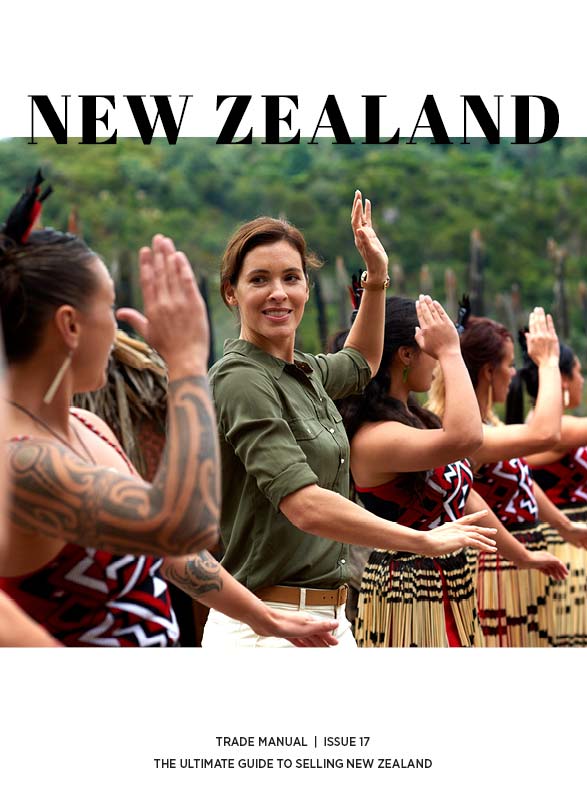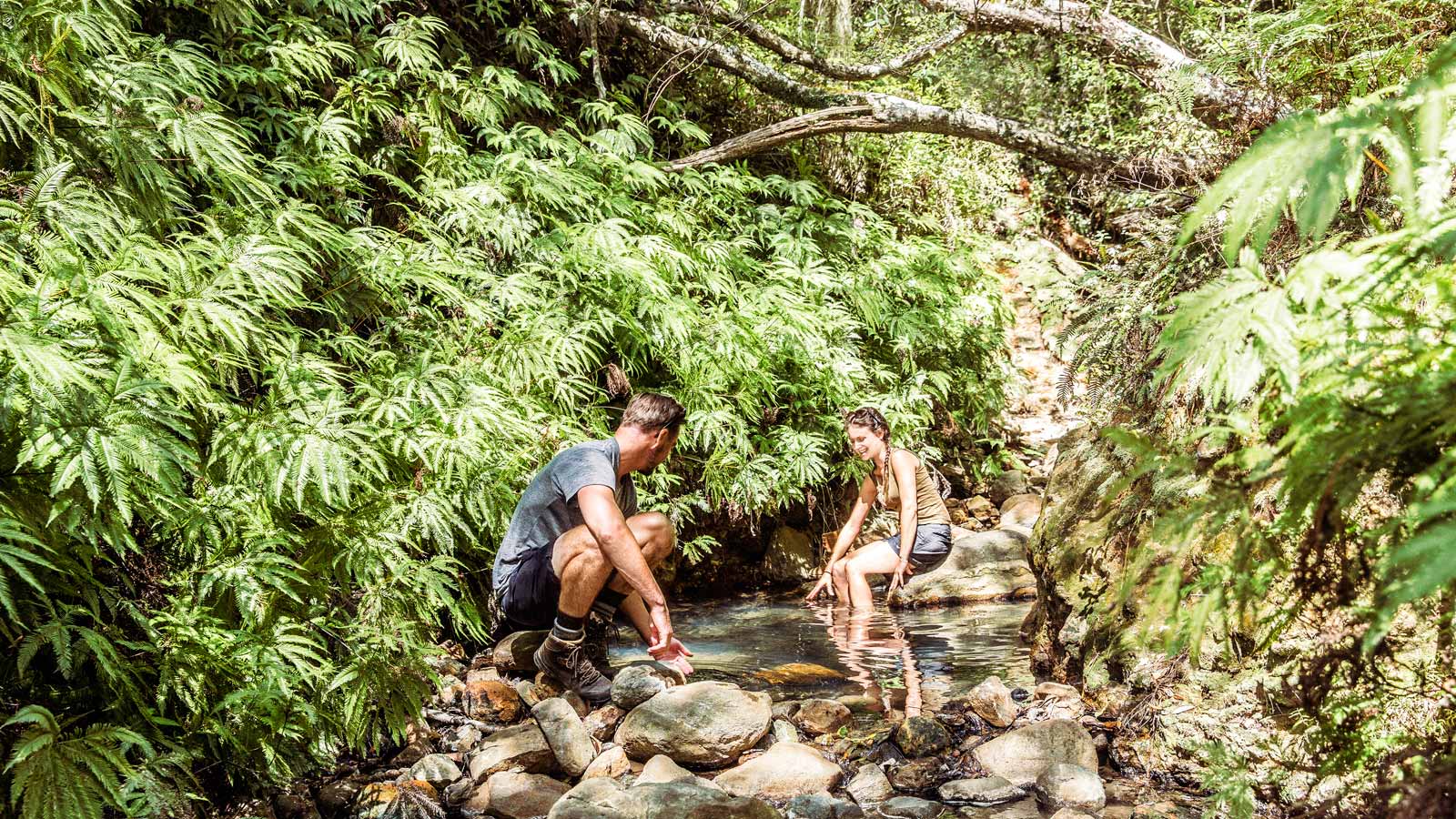The Māori are descended from an ancient line of Polynesian people who made epic journeys in waka hourua (voyaging canoes) from an ancestral homeland known as Hawaiki to reach these shores over 700 years ago. Gradually settling throughout the country, Māori established deep relationships with the land, personifying its natural features to create a history in which the people and the land are interwoven.
From the earliest years of European settlement, trading relationships were established between Māori and the new arrivals. In 1840, at the small Bay of Islands settlement of Waitangi, the relationship was formalised in an historic treaty between Māori and the British Crown – The Treaty of Waitangi – signed by chiefs from many Māori tribal groups. The Treaty of Waitangi established British law in New Zealand while guaranteeing Māori authority over their land and culture. Today it remains a cornerstone of New Zealand’s law and is fundamental to contemporary settlements negotiated between Māori and the Crown in compensation for losses of land and rights during the colonial era. Explore this aspect of history at the Waitangi Treaty Grounds in the Bay of Islands, where visitors can see the Treaty House as well as a fully carved Māori meeting house and one of the world’s largest waka toa (war canoes), all set in beautiful landscaped grounds.
Today Māori make up about 15% of the New Zealand population and their rich cultural heritage makes a unique and important contribution to the character of the country. Visitors to New Zealand will find many opportunities to experience both traditional and contemporary forms of Māori culture first-hand.
Māori Culture Today
In recent years, Māori culture has experienced a significant renaissance. Traditional culture is being given a contemporary interpretation: whether through music, the arts or the media.
The resurgence of Māori culture can be seen in schools, at home, on the marae and on the street. Traditional beliefs are increasingly being adopted by Pakeha (New Zealanders of European descent) and young Māori. Tikangi (customs and traditions) are practised, ancestors are honoured and the concept of whānau (family) is still central to Māori social structures. Kapa haka groups are widespread, with a national kapa haka competition being held every two years. Modern filmmakers explore Māori heritage, while the Māori TV channel tells stories by and about Māori people. www.maoritelevision.com
Te reo Māori, a fading language in the 1970s, is now an official language of New Zealand and taught in many schools. Since 1975 te reo Māori has been celebrated with Māori Language Week, and in 2008 Google Māori was launched. Many Kiwis (and visitors) wear pounamu (greenstone) to connect them to the country, while moko (traditional tattoos) have regained popularity with Māori.
At a marae, visitors receive the same powhiri (welcome) that has been given to guests for 170 years. And those visiting in June or July can join in the annual celebration of Matariki, the Māori New Year, with workshops, exhibitions and colourful events.
Tribal New Zealand
Although Māori tribal identity is still a crucial element of the culture, it is celebrated as a unifying force rather than a divisive one. Intertribal warfare was once common, and you will find many historic battle and siege sites around the country, but now the differences between tribes are embraced as adding to the richness of the whole culture. Māori people define themselves by their iwi (tribe), hapu (sub-tribe), maunga (mountain) and awa (river). Whānau is the name given to family – in Māori society this word applies not only to the immediate family, but also to the extended family and all those who are related by blood or marriage.
The Art Of Story
Before European colonisation, tradition played an important role in a unique and complex social structure. As Māori people had no written language, they preserved their past through spoken stories which were handed down from generation to generation. The art is preserved and performed at various cultural sites around the country.
Experiencing Māori Culture
In contemporary times, Māori tourism has become a means of promoting and preserving New Zealand’s indigenous culture.
Marae Visits The marae (meeting place) is a central element of Māori culture. A visit to a marae provides a deeper understanding of the local culture, but visits must be arranged through a tour guide who will brief visitors on the correct protocol.
Cultural Performances Based on traditional arts, but incorporating contemporary elements, kapa haka is a performance art combining theatre and song.
Hāngī To prepare a hāngī, a hole is dug and the food (usually including potatoes, pork and kumara) is placed in woven baskets and buried with hot rocks, allowing the meal to cook in its own steam.
Guided Tours Māori people have a close spiritual relationship with the natural environment: visitors may join a guided walk or river journey in a waka (canoe) to gain deeper appreciation of the land. Local guides offer an insight into the land’s history and tradition, as well as the medicinal, culinary or spiritual properties of native flora and fauna.
Replica Villages Replica Māori villages offer a glimpse into pre-colonial life in New Zealand and a chance to experience traditional rituals, listen to ancient stories, join in a hāngī and watch performance art. Visits may include a guided walk.
Arts and Crafts Māori developed powerful artistic forms such as carving and weaving. Visitors can admire stunning pieces in the country’s museums or see magnificently carved meeting houses and canoes. Contemporary artists incorporate traditional motifs such as the koru (shoot of a New Zealand fern) into their designs. Visitors can join a workshop and try creating their own work of art.
Māori Pronunciation Guide
Māori words can look like tongue-twisters, but master a few rules and your clients will be fine. Note that Māori words do not take an ‘s’ when they become plural, and each syllable is stressed equally. Māori uses 15 letters. The vowels are pronounced as follows: A – as in ‘bar’; E – as in ‘egg’; I – as the ‘ee’ in ‘free’; O – as in ‘or’; U – as the ‘o’ in ‘to’. There are long and short versions of each vowel: the long may be denoted with a macron. The eight consonants – H, K, M, N, P, R, T and W – are pronounced as in English. The two additional consonants are: ‘WH’ – pronounced like the ‘f’ in ‘far’ – and ‘NG’ – pronounced like the ‘ng’ in ‘sing’.
A great time to practise is Māori Language Week, held once a year to celebrate the Māori language and encourage the use of more Māori phrases in everyday life. For more tips on learning the Māori language, visit www.tetaurawhiri.govt.nz.
Māori Terms & Concepts
Māori culture is full of fascinating concepts and belief systems. Here are some important terms. You can also download a more comprehensive list of Māori Terms & Concepts.
Aotearoa New Zealand; Land of the Long White Cloud.
Atua Gods or spirits.
Haere mai Welcome.
Haka Posture dance including rhythmic movements, facial contortions and shouted words. Famously performed before rugby games.
Hui Meeting or gathering of people.
Hongi The hongi, a traditional Māori greeting, is an integral part of the pōwhiri (welcoming ceremony). Noses are pressed together and the hā, or ‘breath of life’, is exchanged and intermingled.
Kai Food. Kai moana is seafood.
Kaitiakitanga Māori concept regarding people as the guardians of natural and cultural heritage, responsible for protecting the natural environment, traditional stories and artistic treasures.
Moko Traditional Māori tattooing on the face or body.
Taniwha Mythical water creature.
Tino rangatiratanga In the Treaty of Waitangi, Māori chiefs agreed to cede sovereignty to the British Crown and in return were guaranteed tino rangatiratanga, or ‘absolute chieftainship’, of their land and culture.
Whānau Family. Not only immediate family, but all related by blood or marriage. Māori define themselves by iwi (tribe), hapu (sub-tribe), maunga (mountain) and awa (river).
Find Out More
To find out more about Māori culture and to book cultural experiences head to www.destination-nz.com. To read about Māori culture try:
The Story of a Treaty by Claudia Orange (Allen & Unwin, 1989)
Haka! The Dance of a Noble People by Timoti Karetu (Reed, 1993)
Ta Moko: The Art of Māori Tattoo by D.R. Simmons (Raupo Publishing, 2009)
The Encyclopedia of New Zealand www.teara.govt.nz
Māori culture, business and tourism www.maori.com
Comprehensive resources for all things Māori www.maori.org.nz; www.maorilanguage.net

